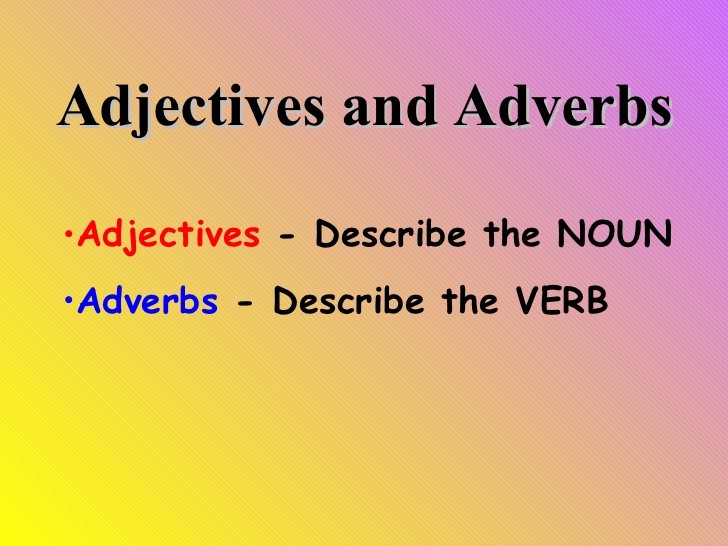Grammar is the strength of English language. When we start learning the language, we often start with the basics of grammar. The concepts that we learn in the beginning include nouns, verbs, pronouns, prepositions, adjectives and adverbs. These basics make up grammar more interesting and confusing.
Today, let us learn about the correct usage of adjectives and adverbs and how to differentiate between the two.

Adjective
An adjective is a word that describes a noun. Rather, it explains more about a particular thing, person, or place. With the help of adjectives, it becomes easy to understand which person, a place or a thing we are talking about.
Example:
A rugged box lay in front of my door.
In the example above, the word rugged describes the box. So rugged is an adjective.

Adverb
An adverb is a word that modifies or describes a verb. When we use adverbs we add detail to a sentence just as in adjective. They explain how, when, or where something has happened.
Example:
He rarely missed classes.
In the above example, the word rarely describes how often he missed classes, and hence rarely is an adverb.
Three rules to avoid confusion
1. We know that adverbs answer the question how. Sometimes it can lead to confusion whether to add -ly or not. Especially, when things are related to senses like taste, smell, look, feel, etc. Here you need not add -ly with linking verbs. We use adjectives instead of an adverbs.
Examples:
· Her perfume smells sweet.
· Meena looked angrily at Agni.
In the first example, smell is a linking verb which requires an adjective to modify the perfume so we don’t use -ly. Whereas, in the second example, Meena used her eyes (to look), so we added the -ly to angry.
2. Adjectives come in three degrees namely positive, comparative and superlative.An adjective in its normal form is called a positive degree adjective. The other degrees are used for comparison, as in the following examples:
Positive Comparative Superlative
Good Better Best
Bad Worse Worst
Examples:
· Vineet is cleverer of the two boys.
· Shilpa is better than the other two girls.
One of the most common error comes from using the wrong form of comparison. To compare two things, always use a comparative adjective whereas use the superlative form when comparing three or more things.
3. Just as in adjectives, adverbs also have their degrees of comparison. When using adverb in comparative form do not remove the -ly from the adverb.
Examples:
Seema spoke English more quickly than she normally did.
He wrote the answers more rapidly than Rohan.
As you can see from the above examples, adjectives and adverbs are simple to understand and with practice you will never get confused between the two. Practice often and clarify your doubts with the help of an online English teacher. Make your grammar foundation strong for complete fluency in spoken English skills.
About Eagetutor:
eAgeTutor.com is the premier online tutoring provider. eAge's world-class faculty and ace communication experts from around the globe help you to improve English in an all-round manner. Assignments and tasks based on a well-researched content developed by subject matter and industry experts can certainly fetch the most desired results for improving spoken English skills. Overcoming limitations is just a click of mouse away in this age of effective and advance communication technology. For further information on online English speaking course or to experience the wonders of virtual classroom fix a demonstration session with our tutor. Please visit www.eagetutor.com.
-By Shailja Varma
Related topics:
1. Active and Passive Voice
2. How to Avoid Common Grammatical Mistakes
3. Homophones Decoded
4. English Grammar Made Easy
5. 10 common mistakes in English